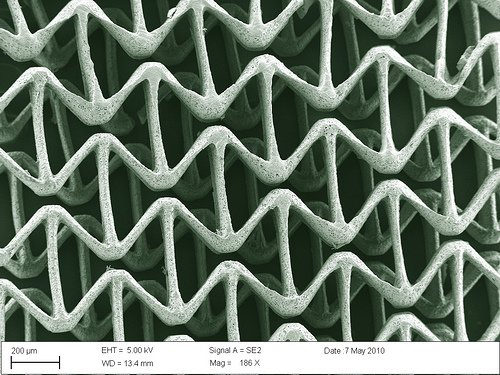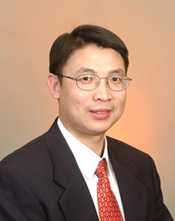NanoEngineers Invent New Biomaterial That More Closely Mimics Human Tissue
San Diego, May 27, 2011 -- A new biomaterial designed for repairing damaged human tissue doesn’t wrinkle up when it is stretched. The invention from nanoengineers at the University of California, San Diego marks a significant breakthrough in tissue engineering because it more closely mimics the properties of native human tissue.
|
The new biomaterial was created using a new biofabrication platform that Chen is developing under a four-year, $1.5 million grant from the National Institutes of Health. This biofabrication technique uses light, precisely controlled mirrors and a computer projection system -- shined on a solution of new cells and polymers -- to build three-dimensional scaffolds with well-defined patterns of any shape for tissue engineering.
“We are also exploring other opportunities,” said Chen, who is affiliated with the California Institute for Telecommunications and Information Technology (Calit2) and is based in its headquarters building, Atkinson Hall, on the UCSD campus. “It’s a new material. I think it’s just a matter of time before more people will pick up and find applications for it in defense, energy and communications, for instance.”
Although Chen’s team is focused on creating biological materials, he said the manufacturing technology could be used to engineer many other kinds of materials including metal parts used in ships and spacecraft, for example.
|
The team includes postdoctoral researchers in multiple disciplines: David Fozdar with the University of Texas at Austin, Department of Mechanical Engineering; Li-Hsin Han with the Stanford University School of Medicine, Department of Orthopeadic Surgery; and Pranav Soman and Jim Woo Lee at the UCSD Jacobs School of Engineering Department of NanoEngineering.
Related Links
Shaochen Chen website
![]() NanoEngineering at UCSD
NanoEngineering at UCSD
Media Contacts
Catherine Hockmuth, Jacobs School of Engineering, 858-822-1359, chockmuth@ucsd.edu


